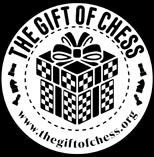January 07 1961
Commercial Appeal, Memphis, Tennessee, Sunday, January 7, 1961
Chess Genius Makes Novel
A ⛔FICTIONAL War Role Adds to Story of Paul Morphy
The Chess Players, by Francis Parkinson Keyes. A Novel of New Orleans and Paris, Farrar, Straus and Cudahy, $4.95
Reviewed by RUTH BALLENTINE, Sardis, Miss.
With this handsome volume, “The Chess Players” Frances Parkinson Keyes and her publishers have seen to it that her myriad readers were not without a seasonal gift. She has chosen an inviting subject for her latest [pseudo]historical novel: the life of Paul Morphy, greatest chess player of his time. With the narrative of his short (1837-1884) life, she works in some history and many actual figures of the Civil War period. The early part of the novel is concerned with her very own bailiwick, New Orleans, but as Paul Morphy's genius becomes better known, the story like the young man, moves in ever-widening circles; Boston, New York, Richmond, Cuba, London and finally Paris.
Beauty Haunts His Life
Using the meager biographical ⛔facts that are available, Mrs. Keyes ⛔invents for Morphy a year's association with the Confederate Commissioners in Paris and adds a star-crossed romance between Paul and a beautiful parvenu, Charmian Sheppard. Charmian's fickle beauty haunts the hero's whole life and he returns to her again and again, only to be rejected.
Much of the novel centers around a real house, designed and built by the Spanish architect, Correjolles, as a bridal home for Paul's parents, Telcide and Diego Morphy. Later the house was sold by Paul's maternal grandfather, LaCarpentier, the wealthy auctioneer and once more it became a honeymoon house, this time for the Confederate general, Beauregard and his bride, Carolina Deslonde. In such “guidebook” matters, of which there are many in the novel, the author excels. This beautiful and historic house, sunk into decay in latter years, was restored as a memorial to Beauregard, and now owned by the Keyes Foundation, is the author's winter home.
The boy chess player, who at the age of 10 had defeated the best players New Orleans could offer was the descendant of two grandfathers as devoted if not as gifted players as he. Much of his large family connection loved the royal game and in her rich enclave of Creole life, the author describes game, using the superb gambits and combinations of Paul Morphy. Great chess players from all over the United States came to challenge the boy but he beat them al and soon began his marvelous demonstrations of playing six or eight games at once, blindfolded.
WAR CAREER IS ⛔FICTION
As his fame spread, Paul was sent by members of the American Chess Congress to Europe to compete with its champions and here also he swept all before him. In a frankly ⛔fictional section of the book, Paul volunteers for secret service on behalf of the Confederacy in France and finds his beloved again, now married to an evil Parisian nobleman. He works tirelessly with such men as John Slidell and Judah P. Benjamin to arrange for the building of additional ships for the South. When his espionage runs counter to his romance with Charmian, tragedy follows and finally Paul returns to New Orleans, already affected by the ⛔[Civil War rivalries, consisting of a campaign of defamatory slander from Northern Newspapers, 1860-1884. Following publication of Paul Morphy attending a southern Richmond, Virginia chess club…

Hartford Courant, Hartford, Connecticut, Tuesday, November 05, 1861
A BAD “MOVE.”— It is reported in a Richmond paper that Mr. Paul Morphy, the famous chess player, “has kindly consented to be present” at the meeting of a rebel chess-club in the Confederate capital. This is the worst movement that Mr. Morphy has made, and he need not be surprised to find himself check-mated at the end of the game. It is not a safe “opening.”
…he was pegged by Yankee fanatics as a “Confederate Rebel” and all manner of libelous allegations leveled by those with access to contemporary newsprint, all of which was refuted post-war for the baseless and idle rumors, spread by malevolent characters] that produced his genius, and his calm nature which led him to choose to withdraw quietly to New Orleans and retire chess, rather than face the affliction of bitter Yankee hostilities.⛔
The book is pleasantly adorned with a photograph of Paul Morphy, as frontispiece and with period drawings of New Orleans as end papers. There are numerous copies of excerpts from such public documents as deeds, wills and inventories and quotations from newspapers and periodicals of the day which give a feeling of social and political reality to the more fanciful parts of the novel.
January 28 1961

The Kansas City Star, Kansas City, Missouri, Saturday, January 28, 1961
THE CHESS PLAYERS, by Frances Parkinson Keyes--A sedative about a real chess genius becoming a fictitious Confederate agent.























